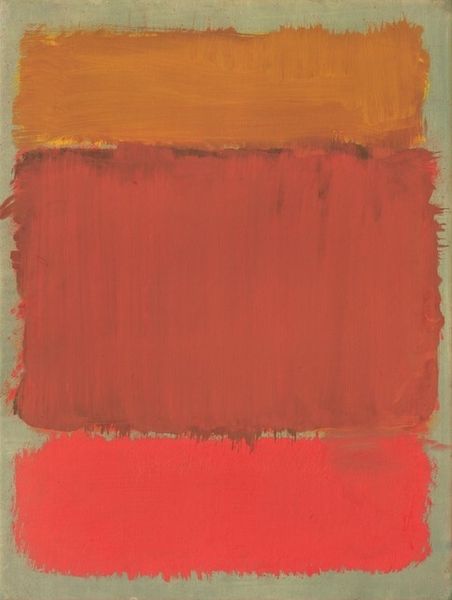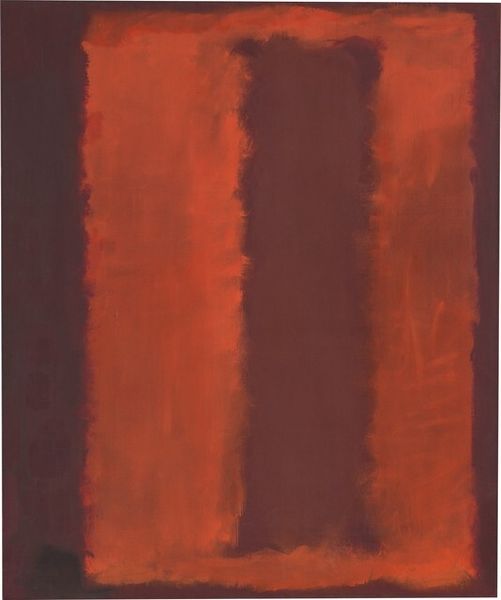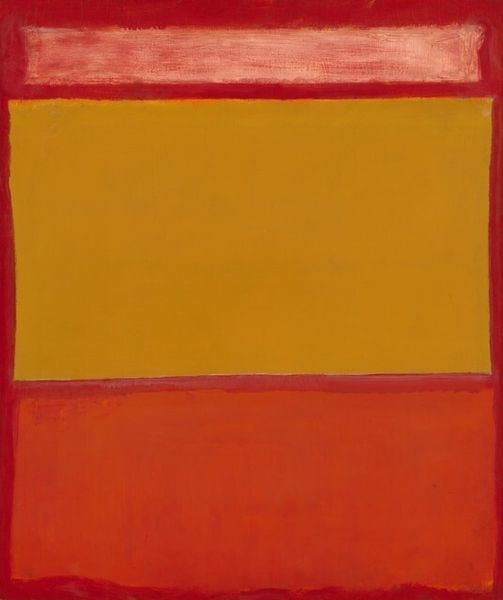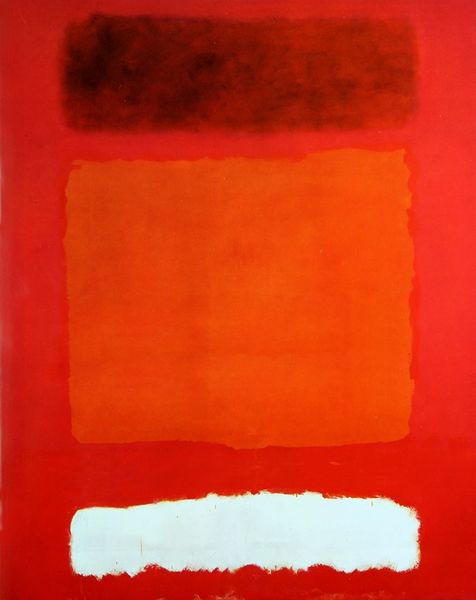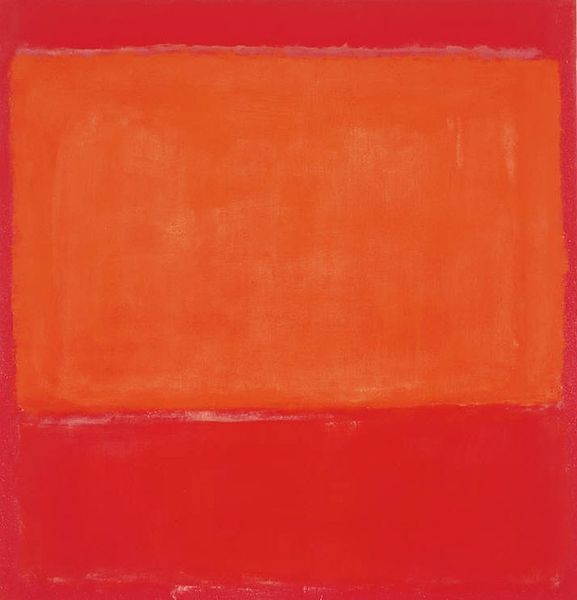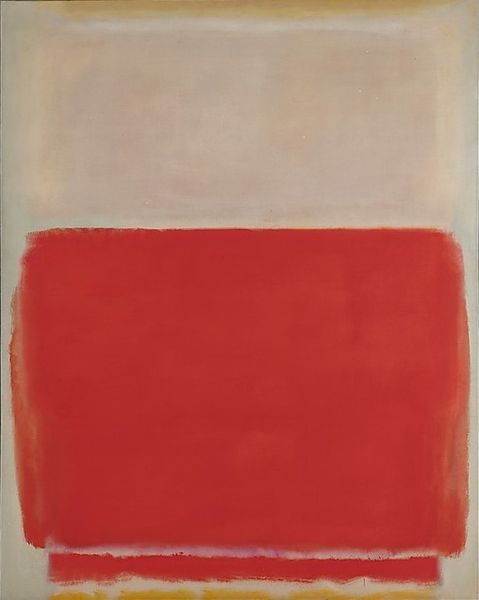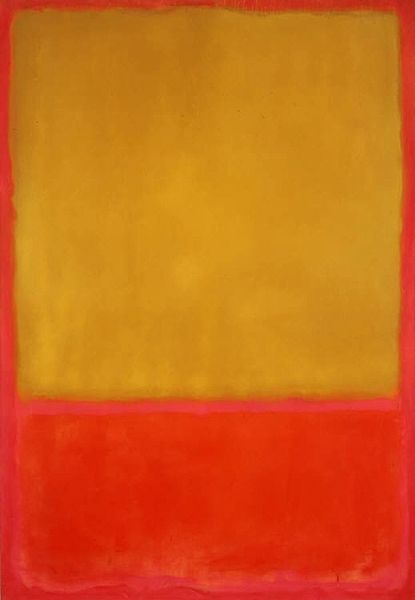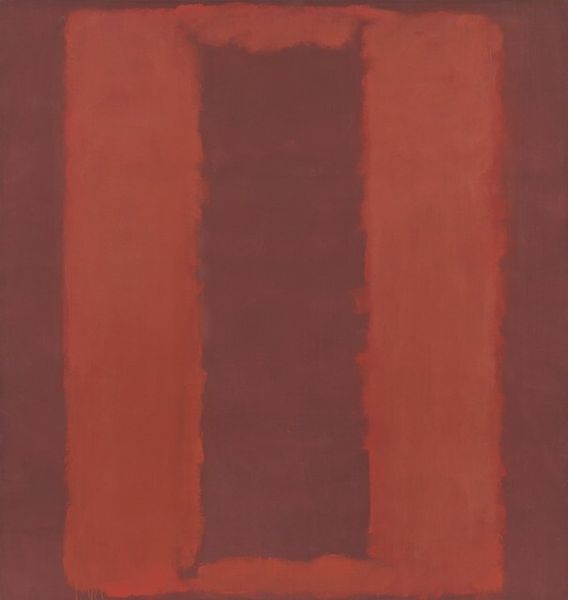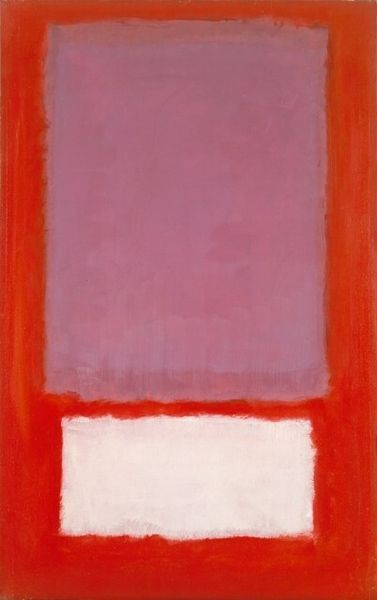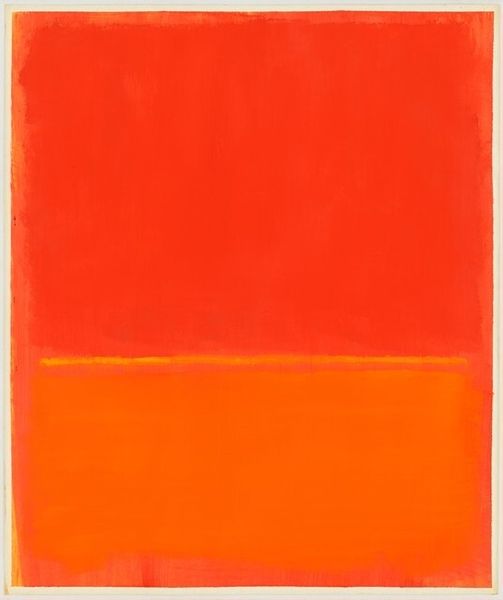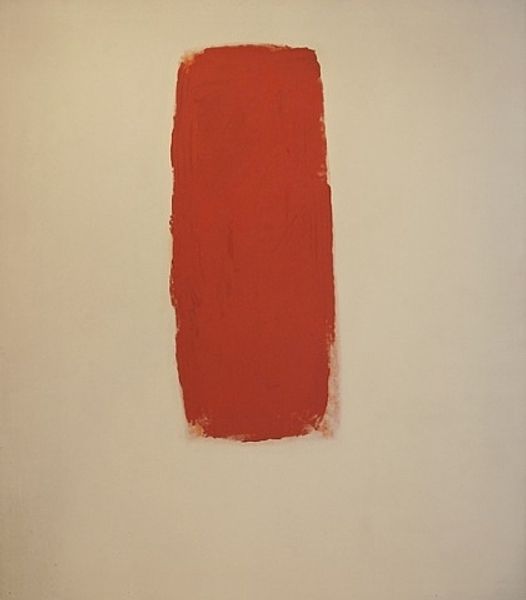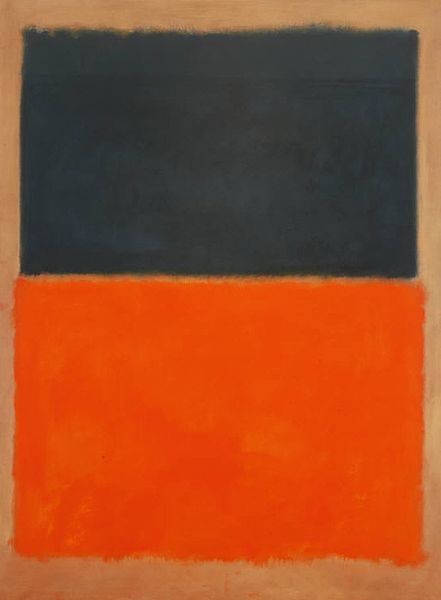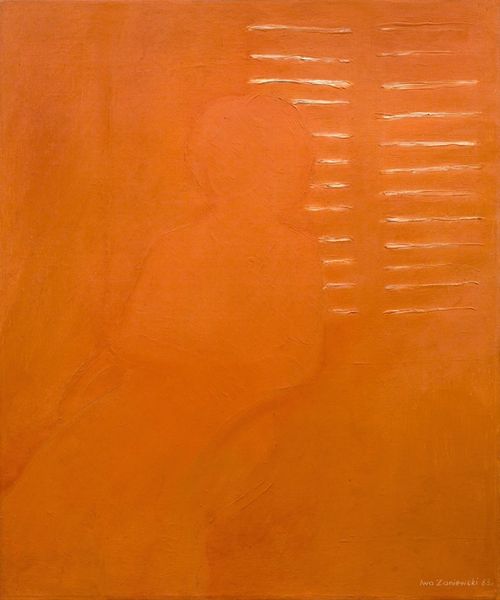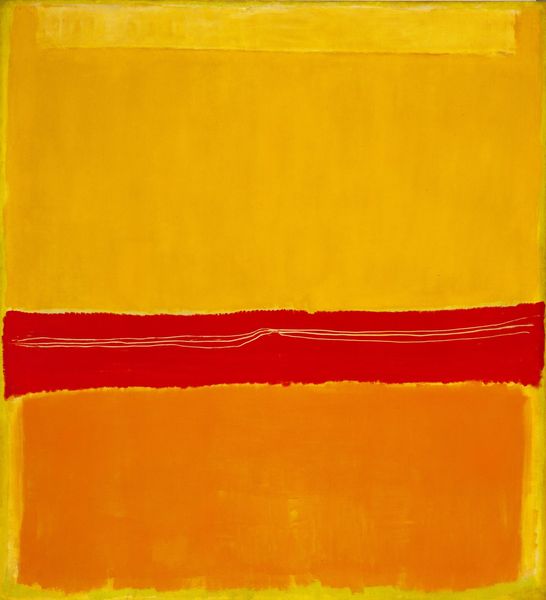
painting, oil-paint
#
abstract-expressionism
#
abstract expressionism
#
painting
#
oil-paint
#
abstraction
#
abstract art
#
monochrome
Dimensions: overall: 279.1 x 235 cm (109 7/8 x 92 1/2 in.)
Copyright: National Gallery of Art: CC0 1.0
Curator: Standing before us is Mark Rothko's "Untitled (Harvard Mural sketch)" from 1962, executed in oil paint. What are your first thoughts? Editor: My initial impression is its raw emotional power; the juxtaposition of those oranges with that deep maroon... almost oppressive, yet undeniably captivating. The scale, even in this sketch, hints at the intended imposing presence. Curator: The use of oil here is especially interesting, considering Rothko’s pursuit of luminosity. How the material manipulates light becomes integral to its impact, don't you think? I wonder if the eventual failure of the commission, and the work being uninstalled, was a critique of the project, in context of Rothko's social-political ideals. Editor: Absolutely, it feels like Rothko intentionally utilized the oil's potential for layered texture and tonal variations to create that effect. And I think situating it within the Harvard commission is key. This wasn't simply art for art's sake. He envisioned it as integrated into a very specific institutional space, and that failure highlights a tension inherent to the project. Curator: Exactly, these murals were destined for a dining hall within Harvard University, spaces loaded with academic and social symbolism. What do you make of the monochrome approach, given the purpose of the work? Editor: The choice of monochrome, that dominant red, suggests both a somberness, almost sacrificial. Consider how museum display creates canonical importance and permanence; its absence asks questions about reception, censorship, and an artwork's evolving purpose after its initial context. It feels fitting, given the socio-political currents swirling around art at the time. Curator: Very true. His exploration of colour and form directly invites reflection on existential themes. Considering that they were never permanently installed as originally planned, the murals ended up playing a totally different role, being housed in museums. This brings up issues of commodification of course, shifting the focus from contemplation of these elemental forms. Editor: The unfinished quality adds another layer. We see the artist's hand, the process. The layers. Almost ruins within the canvas, they hint to materiality and artistic labor itself, becoming an embodiment of its troubled history. Curator: Thinking about Rothko’s intent, versus its final placement... I guess these artworks challenge our expectations of how institutions affect meaning. Editor: Precisely, the journey of this work, from conception to its current existence, forces us to re-evaluate the very definition of a "finished" artwork.
Comments
No comments
Be the first to comment and join the conversation on the ultimate creative platform.
